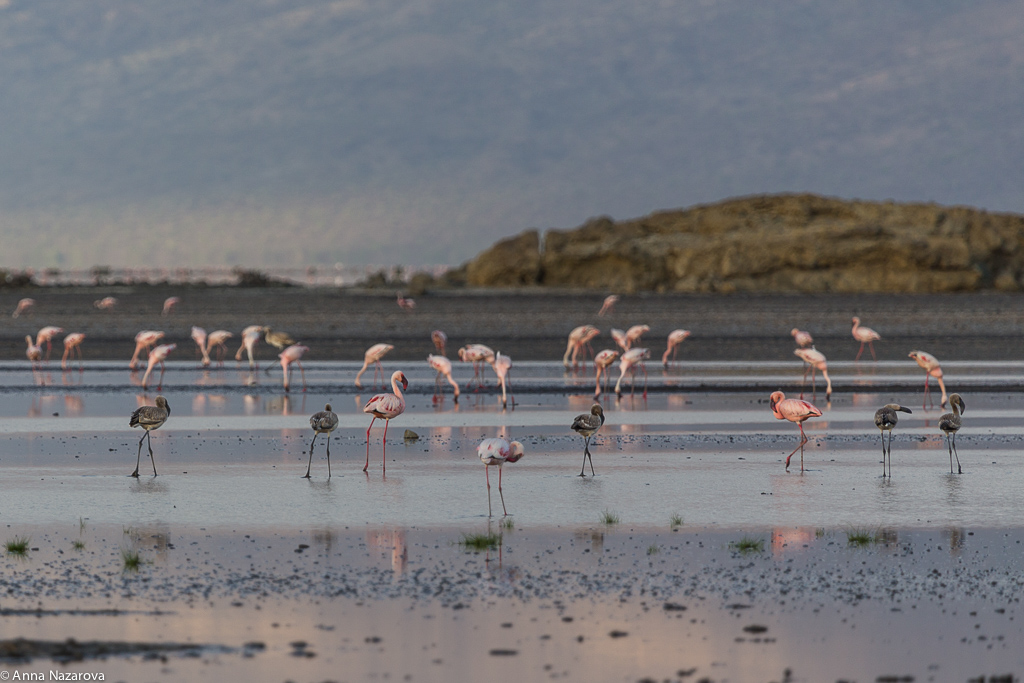

The lake’s steeply alkaline waters are a graveyard for thousands of small birds.īest time to spot birds at Lake Natron: the flamingos of Natron lay their eggs normally during the end of the dry season in September and October but the hatching starts in the early parts of the wet season and climaxing by December. The long-legged waterfowl may flourish, but to any other living creature, Lake Natron is hell on earth. The Rift Valley’s Lake Natron is the chosen mating ground of the endangered lesser flamingo. During the rainy period (November-May), some activities may be cancelled due to heavy rains. You won’t find wildlife here, but the tracks are good. The weather at Lake Natron is primarily hot and mostly dry, and the coolest months are June through August, but some guests find these temperatures tropically warm. The period June-October is the best time for walking and hiking tours. If rain has fallen up in the Rift Valley, water streams over the escarpment, forming waterfalls and streams of sparkling clear water which one can swim in.īoth walks are included when visiting Lake Natron. Hike to the Engaresero rivierĪ Maasai guide will lead you along the ridges of the lake to the source of the Engaresero River.

In the dry season, you feel as if you are in an apparently uninhabited, dessert-like dream world. The quiet calmness returns.Ī Maasai guide will take you for a walk along the shores of the lake. And as suddenly as they arrive, they disappear in spectacular waves of pink. Each year, around February or March, enormous flocks of gaggling birds converge on the salt lake. It is also the most important breeding ground worldwide for the Lesser Flamingo. In the dry season, a bacteria turns the dry surface red. Breeding ground for the endangered Lesser Flamingo.However, in the dry season, the view becomes almost a moon landscape, in which bright pink cactus blooms contrast against the dry, dusty rocks. The lake fills up from mineral-rich water flowing down from the Great Rift Valley. Sometimes one can even see the lava stream from Ol Doinyo Lengai, a sacred place to the Maasai. Majestic and active volcano as a prominent backdrop.If rain has fallen, or not if the millions of flamingo have arrived, or if the lake is still dry, it is an experience which cannot be replicated anywhere else in the world! Our results will assist the future sustainable management of Lake Natron and will contribute towards Lesser Flamingo conservation.Off the beaten track away from the masses! Real adventure seekers who visit Lake Natron, will be rewarded with a unique, near magical experience. Analysis of lake features in the imagery, including the presence of salt islands, has been used to set lower and upper limits to lake areas suitable for flamingo breeding. Comparison to infrequent observations of flamingo breeding at Natron are consistent with the prevailing hypothesis of the importance of receding lake levels.

Flamingos lake natron series#
A time series of lake surface area has been produced which shows a high degree of variability in lake levels. In addition, local environmental change and global climate change over the past 50 years have altered the hydrological characteristics of the catchment.Īrchival Landsat imagery (1984–2011) has been used to establish baseline data about the past hydrological variability of the lake by applying the Modified Normalised Difference Water Index (MNDWI). Both developments will significantly alter the hydrology and ecology of the lake and could impact flamingo breeding. Lake Natron is threatened by two proposed developments: a multi-purpose dam, to be built on the Ewaso Ngiro (South) River (45% of the lake's catchment area), and a soda ash extraction factory. The lake is of critical importance as the sole breeding site for East Africa's population of Lesser Flamingos ( Phoeniconaias minor), a species which is classified as near-threatened due to decreasing numbers and limited suitable breeding sites (IUCN). Its a very salty lake and the temperature can reach 50C degrees. Landsat satellite imagery was used to investigate the ecohydrological sustainability of Tanzania's Lake Natron. 97 of the lesser Flamingos are said to visit this lake.


 0 kommentar(er)
0 kommentar(er)
